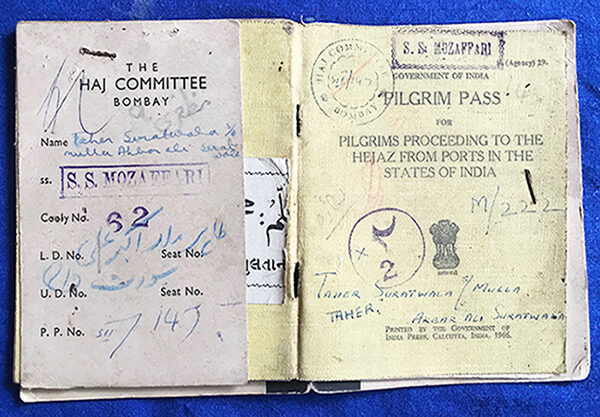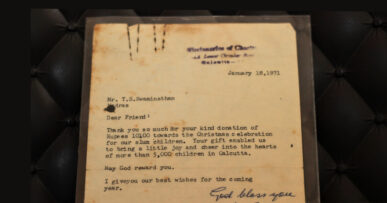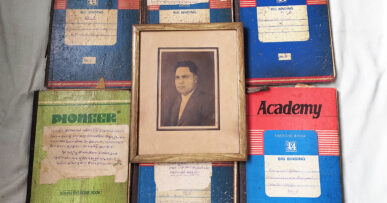TEXT AND PHOTOGRAPHS BY AMMAR HAMID
Kolkata, West Bengal
I find joy in leafing through my late Nanaji’s possessions. The delicate scent of old crumbling documents, the brittle feel of his myriad collection of old biscuit tins, the wonderment in unearthing rich family history and vivid anecdotal experiences.
Nanaji was born in the town of Sidhpur in Gujarat, in August 1931. The eldest among four siblings, he completed his matriculation in his hometown. Hailing from a family of very modest means, one which could afford only one square meal a-day, he vouched to raise his family out of penury. A sprightly young man of 23 then departed to Aden, Ethiopia, to work as a salesman. Nanaji would often recount his experiences of getting a promotion, living in staff quarters, and plucking peaches in the plenty from groves lining the roads.
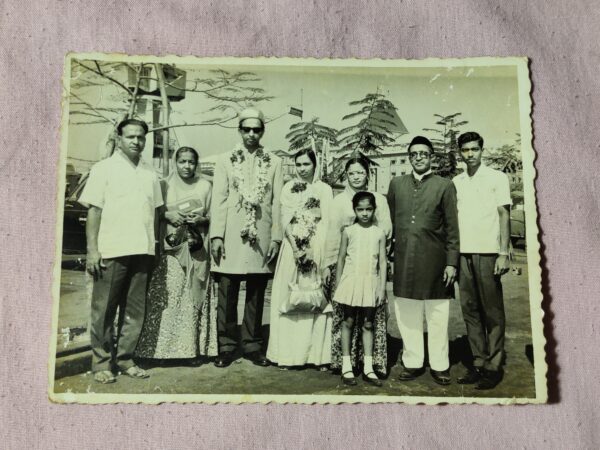
When he came back to India, he found work at his half-brother’s departmental store in Bombay. Later, he settled in Calcutta and set up shop in the hardware trade, as a sole bread earner for an extended family of 8 including two daughters, my Ammi Tasneem and Maasi Sehrebanu. Having gone through tough times, Nanaji was hardened by his experiences. He took it upon himself to inculcate in us a sense of responsibility and duty. He would inspire us to study hard and work even harder, and would often say to us in his mellifluous voice, ‘standing at the foot boys, gazing at the sky; how will you get up boys, if you never try‘.
As a child, weekends were spent visiting Nanaji’s home. He would regale us with tales from his past. His stories were as heart-warming as chicken soup for the soul. With Nanima passing away in 2018, he did not want to stay at home alone anymore. “Too many memories attached here.” The house was abandoned. But then began the arduous task of clearing out the cupboards and combing out countless vintage artefacts he had collected over the years.
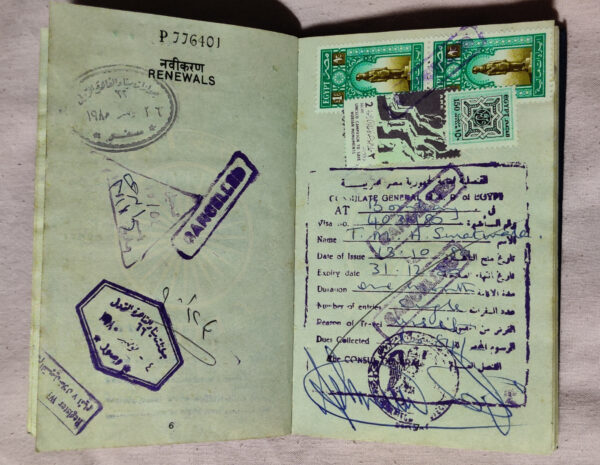
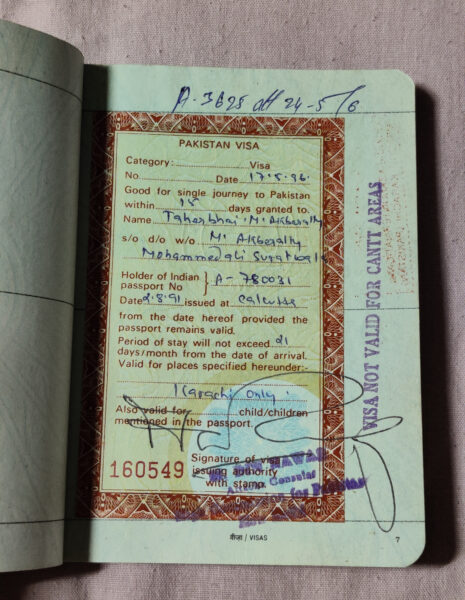
Pakistan Visa, 1996 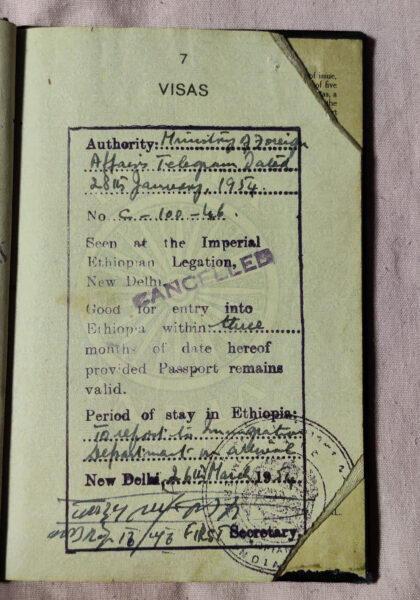
Ethiopia Visa, 1954
Nanaji spoke through his collection. His habit of carefully storing away things in his possession was his way of telling his future generations about the life he lived. In fact, today, one could see his journey pass by through the objects he collected. I took up the task of chronicling his personal belongings, being fascinated with his life and times. From the tijori of his cupboard, not visible to the naked eye but found by someone craving for heritage that is normally stored in vaults like these, the recesses revealed a small plastic packet with a stack of documents, over half-a-century old.
Among the age old sheaves in the packet was a yellow book the size of a passport. Though the pages had aged, I could see that its spirit was intact. Even the passage of time could not dull its sheen. It was Nanaji’s rite of passage to Haj, which every pious Muslim craves to achieve in their lifetime. The annual pilgrimage takes place in the last month of the Islamic calendar, at the ‘House of Allah’, the ‘Kaaba’ in Mecca. The rituals associated with the Haj date back to the Prophet Mohammed, and have to be committed by every Muslim at least once in their lifetime.
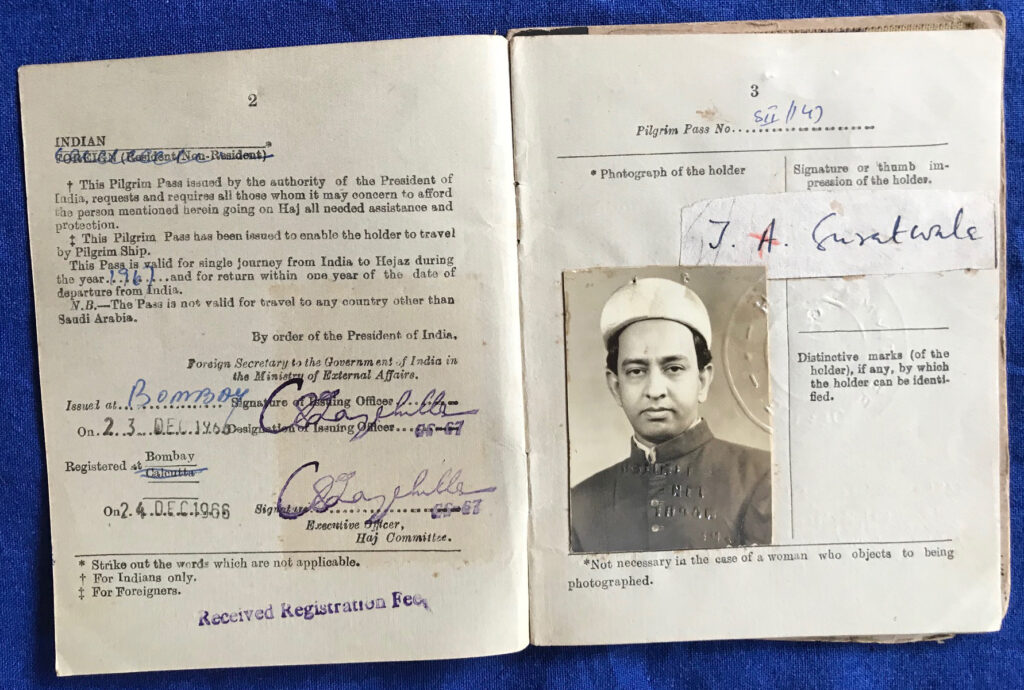
I was surprised to note that Nanaji took the trip at the young age of 35. ‘Pilgrim Pass for Pilgrims Proceeding to the Hejaz from Ports in the States of India’ read the cover, with his name at the bottom, Taher Suratwala, Son of Mulla Akbar Ali Suratwala. The document was ‘Printed by the Government of India Press, Calcutta, India, 1966’. This was the ancient version of the modern e-Visa. As per the document, Nanaji and Nanima had undertaken their Haj pilgrimage to Mecca in 1967. The Pilgrim Pass was issued at Bombay on 23 December 1966.
What is today a clinical job of a one second photo, I could see that Nanaji had prepared carefully- almost as a ritual, for his photograph. He had meticulously dressed for the occasion, resplendent in a shining sherwani and feta. In his eyes shown steely determination.
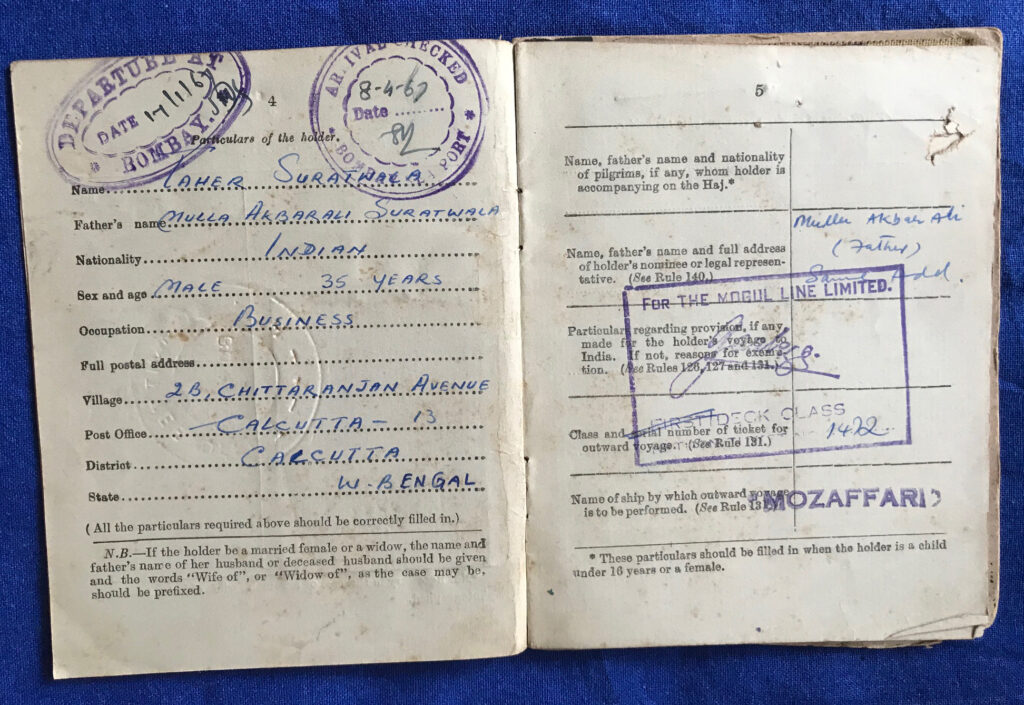
The Departure and Arrival stamps from Bombay to Jeddah read ‘17 January 1967’ and ‘8 April 1967’ respectively. Also, instructions to pilgrims were published in three languages, English, Urdu and Bengali. The couple had departed on the steamer S.S. Mozaffari, travelling in Deck Class. Their coach was Number 62, having been allotted a Cooly of the same number. The name of the shipping company, The Mogul Line Limited was embossed on Nanaji’s photograph.
A quick Google search revealed that The Mogul Line was the largest shipping company ferrying Haj pilgrims from India. The 1948-built S.S. Mozaffari had a capacity to carry 1,460 guests.
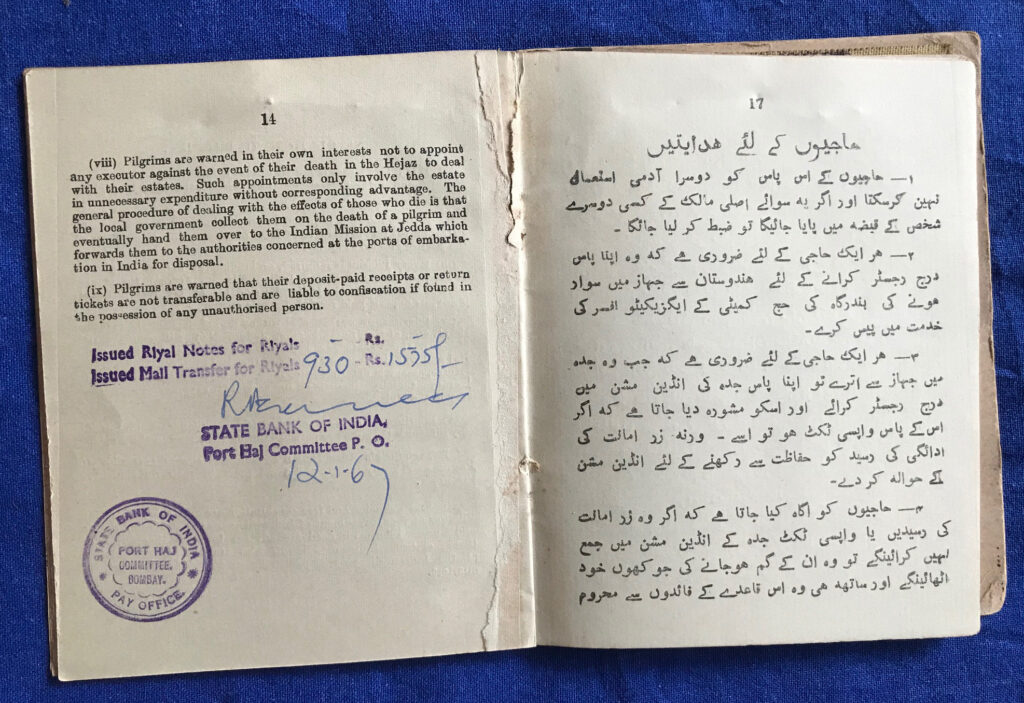
Interestingly, the State Bank of India stamp of the Port Haj Committee states that Nanaji was carrying 1,575 rupees, which gave him 930 riyals in exchange. That only this much would have been enough for a four month journey is beyond comprehension in times like today, when the same amount would get exactly 77 riyals, not even enough for covering costs for a day! The Pilgrim Pass was also accompanied by ‘International Certificates of Vaccination’ issued by the World Health Organization. It was given against shots taken for Yellow Fever and Cholera. The booklet was published bilingually in English and French those days.
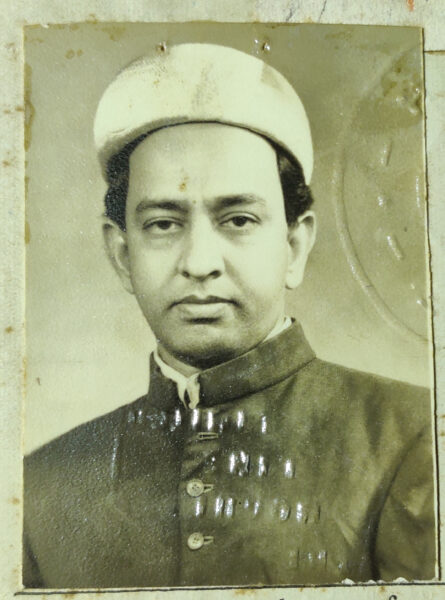
Taher Suratwala’s Haj pass photograph 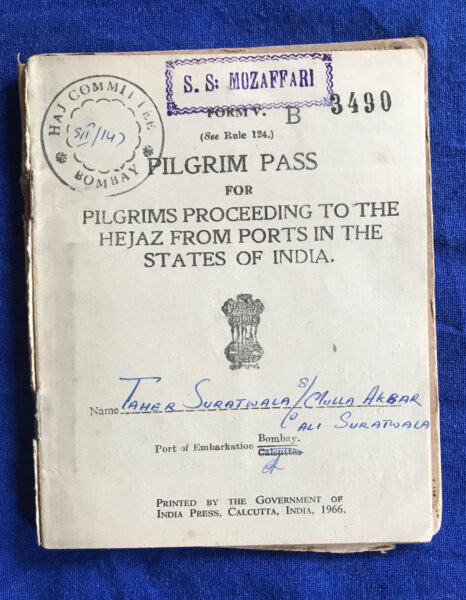
Front cover of the Pilgrim Pass
To gain perspective, every year during Haj, a Saudia Boeing 747 aircraft flies out of Calcutta ferrying 300 Haj pilgrims to Medina over a seven hour flight. It took my grandparents a royal ten days at sea to cover the same distance then. Also, what is generally a 40-day pilgrimage, also shortened to 21-days for many today was a four month affair then. It was clear that people those days had time on their hands!
Ammi was 7 years old when her parents left for Haj, and has faint memories of them making the trip. She remembers them carrying a ‘granary’ of anaj and kitchen implements including a Primus stove to cook during the four months. Luggage was not a problem because in the ship, they were not restricted by the standard 30 kilos reserved for flights. Also, they had made a group of 3 couples, where the women cooked while the men gathered the bazaar.
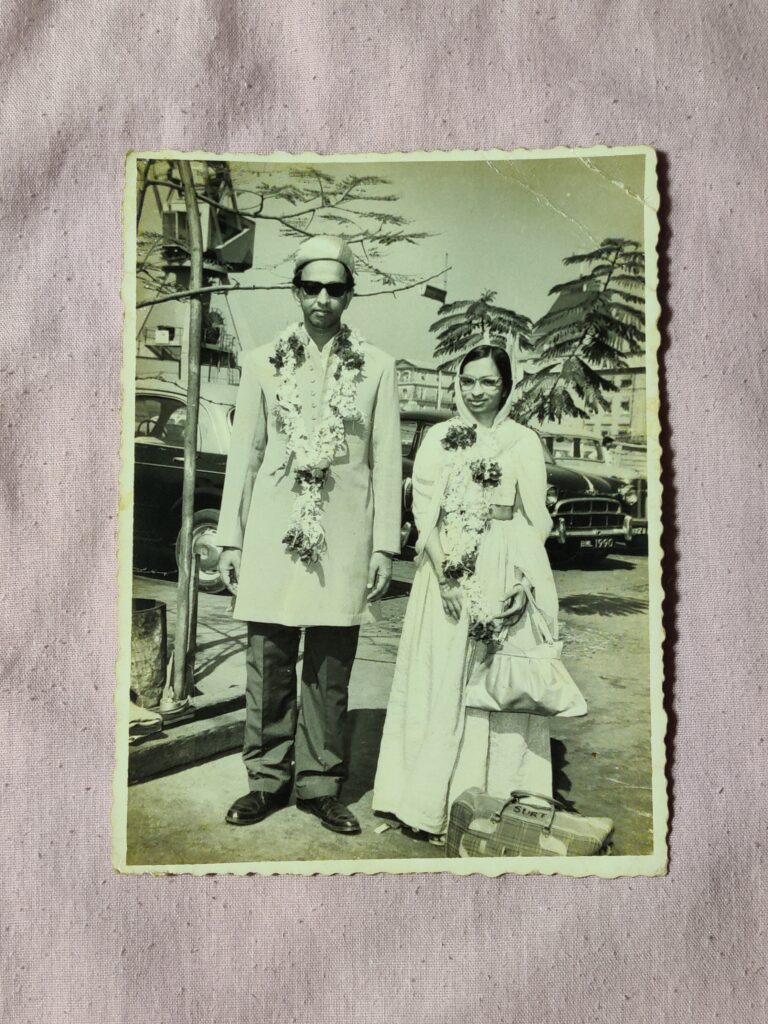
The author’s Nanaji and Nanima while departing for Haj in 1967 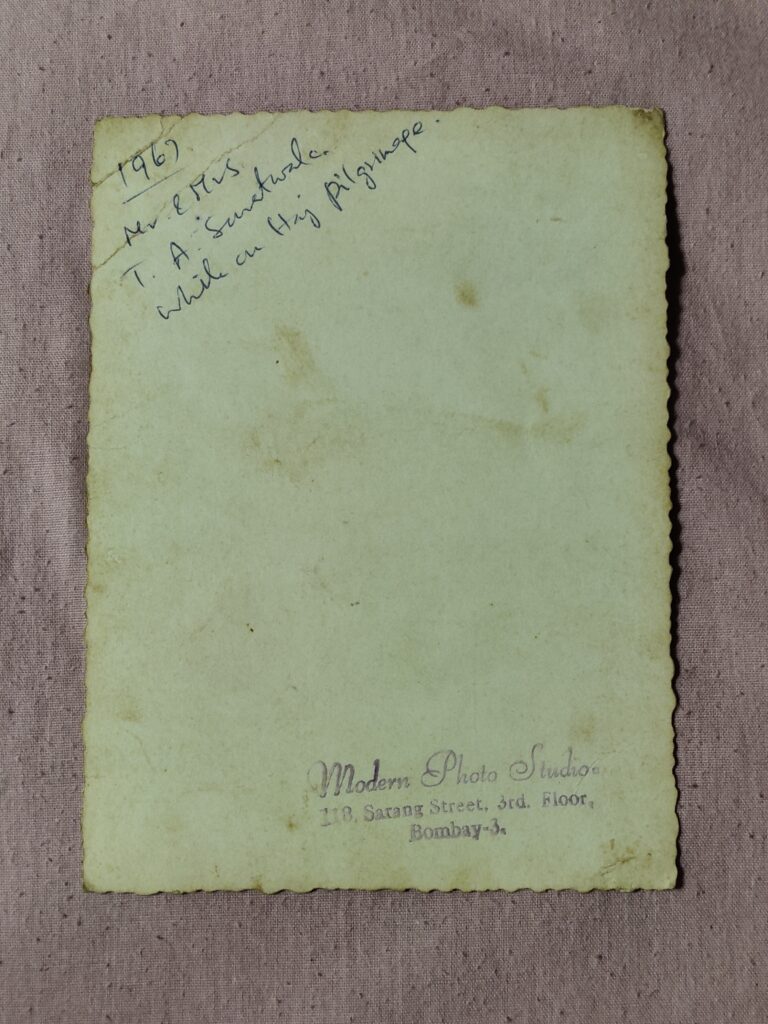
I also remember Nanaji telling me about his trip, that vendors sold bars of pure gold on the roadside, and it cost only a few rupees a kilogram! Ammi remembers going to Bombay together with her sister, when her parents returned to a grand reception at Bombay Port, with garlands and moist eyes.
Nanaji had collected every passport he had got printed from over the years. Long before travel became a part of common consciousness, I discovered that he was a globetrotter. His four passports revealed that he had travelled to countries as diverse as Iraq, Sri Lanka, Pakistan, Yemen, Egypt, the UAE, Saudi Arabia and Ethiopia, some a couple of times as well.
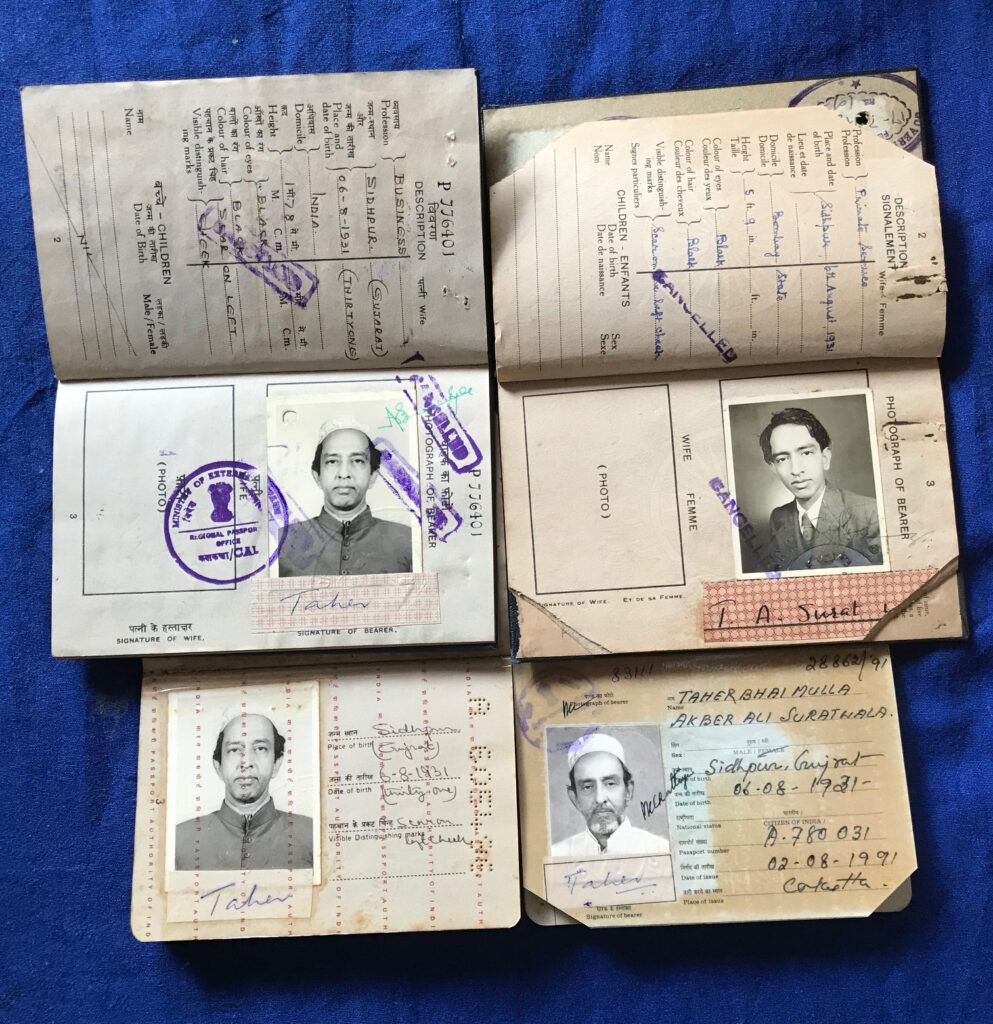
Coincidentally, years later, I found myself in some of the countries he had visited, and his experiences became the starting point to my wanderlust. “Ammar, don’t forget to drive a hard bargain when you buy dry fruits in Karachi.” “Colombo gets very hot in the afternoon, hydrate yourself with coconut water sold at every street corner.” “The Iraqi people are very friendly, don’t worry, you’ll have a great time.” The Pilgrim Pass reveals a rite of passage as a historic journey leaped into the pages of history.

